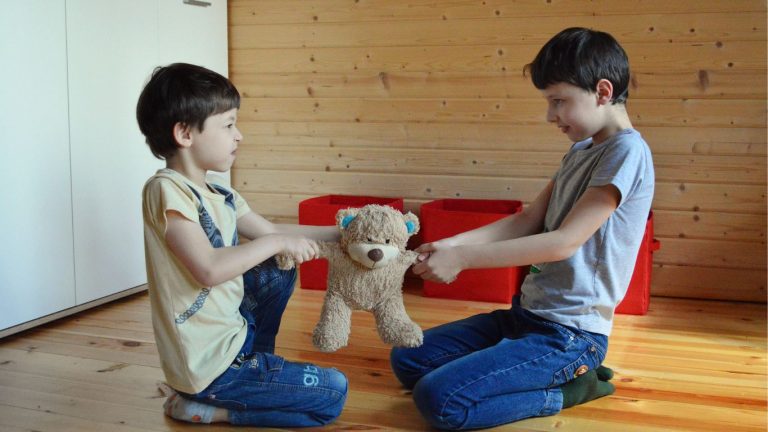I am passionate about food and health but I don’t expect my kids to be. I know I wasn’t when I was a kid.
With programs like Junior Masterchef it can be easy to forget that children aren’t always foodies. In fact, I’ve read a number of articles saying even some of the most talented adult chefs used to be fussy eaters.
Children don’t care what food will keep them healthy, and they shouldn’t have to. That is our job as parents. Focussing our attention on getting our children to eat and like healthier foods has the opposite effect; if children need to be talked into a food then their perception of that food’s flavour diminishes.
Children only want to eat what tastes good. Our time and efforts are better spent preparing a wide variety of yummy foods that combine healthful aspects into the meal.
So how do we go about helping our little ones (and not so little ones) be passionate about food and health?
Allow them to explore their food
Touch
Children experience food with all their senses. Squishing and smooshing are all part of the learning, particularly when they are first learning to feed themselves.
They are experiencing the texture and feel. They are learning to feel comfortable with the food before they put it anywhere near their mouths. It’s messy, it’s frustrating but it’s important. Cover the floor with a plastic sheet, cover your darling in the biggest bib you can find and let them smoosh.
As an aside: throwing food is not part of exploring food! Maybe being able to squish and smoosh to their hearts content will minimise the throwing, but I can’t say for sure.
As your child is smooshing and squishing you might find that little or none goes in their mouth. That’s ok. When they are hungry and ready to eat they will. It is important to learn and respond to your child’s signals. They have an innate ability to know when they are hungry and when they are full. If you’re not sure if they are still hungry this can be a good time to leave them with the bowl and spoon to further explore their food.
If they are refusing food, be ok with that. Try different food at the next meal. Don’t be put off if your child doesn’t like a specific food, keep offering it but with no expectation that they have to eat it.
Smell
Smell is crucial to experiencing food. Our appetite often decreases when we have a cold or a hayfever because we can’t smell. When we have a congested nose our sense of smell changes and decreases. This affects our perception of our food.
Try this next time you are eating. First pinch your nose so that you can’t breathe or smell through your nose and then take a bite. Chew with your nose blocked. Now take your hand away and have another bite. How did this change the flavour of your food? You will find that the flavour just isn’t there like it was with the second bite.
When children have colds their perception of food changes and because they live in the present moment it doesn’t matter that they liked it yesterday. Today is what is important and today it doesn’t taste good so they may not want to eat it.
This doesn’t mean you should go through your whole kitchen trying to find a food they will accept. Keep it in mind when preparing the meal, perhaps you may want to choose foods that usually give comfort when they are sick. Accept that they may not eat as much as they would normally.
Sight and sound
We eat with our eyes is a very apt saying. Sight and smell are our first indicators of whether we will find a meal or food acceptable. While I am the first to put my hand up and say I have never made a picture out of my child’s food I do appreciate the importance of what food looks like to them.
Respecting that their preference is to have all foods not touching on the plate for example. Taking care not to overfill the plate so that it doesn’t look overwhelming and too much to eat. This will usually put a child off from even starting.
Even sound makes a difference. There is nothing that my children like better than showing me how crunchy their chip is or crunching into a taco. There is something about crunchy food that kids will often find irresistible. This of course doesn’t mean you need to serve only crunchy foods but it just highlights that taste is not the only factor when finding food acceptance.
Taste
Lastly we come to taste. Some kids are supertasters so can’t handle anything that has too much flavour but we are now realising that some kids are under-tasters. For them a lot of foods taste bland and boring.
These are the kids that love salami, the hotter the better, and olives, often the weird and wonderful things you associate with adults, not children.
No matter what your child’s preference is though, exposure to a wide variety of foods is essential. They may not eat them but if you are eating them and they are available to your child then this helps your child to feel comfortable with all sorts of food and they will gradually increase their repertoire of favoured foods.
Think back to your food preferences as a child. Are they the same now as they were then? Do you eat vegetables now that you hated as a child? Is your dream meal still ice cream and lollies?
I’m guessing that things have changed a bit since you were a child. This is normal and expected. Our food preferences change as we get older. Our experiences as a child do determine how much our preferences change though. Perhaps you were forced to eat a particular food even though it made you gag, chances are you still can’t tolerate that food now. Perhaps you were served a limited range of foods as a child, now as an adult you’re more likely to still eat a limited range.
We all have our own food preferences and sometimes these are foods that we would rather not eat but will do so if they are served to us. Other times they’re just not an option and hunger is preferable.
Be honest
As your children get older they will know if you don’t like a particular food. For me it’s fish. I used to love it as a kid but now as an adult I really struggle with the texture and the bones.
My children know I’m not that keen but I still buy fish and serve it for the family. I will keep trying a small portion but I leave the rest to everyone else to devour. They know that it is ok to have different preferences but it is not ok to make comments.
If a particular food is not to their liking then they simply leave it. They are not allowed any exclamations of disgust just a simple no thank you or discreetly removing the food from their mouth.
When you are both trying a new food it is ok to share that you feel a little apprehensive. You are showing your children that it is normal to feel a little wary of new things.
Show them how you are smelling it and what you are thinking before you taste it. Do it in a constructive way though. Saying things like ‘this looks disgusting’ does not encourage trying. Changing it to this looks quite strange can let them know you are not sure but you will give it a go anyway.
Feeling comfortable enough to try
When I think of trying new foods I think of the Durian fruit I saw in a Singaporean market when I was in my twenties. The smell was overwhelmingly sickly sweet. The market was busy and noisy.
I knew in Asian culture this was a delicacy that it was supposed to taste beautiful. But I couldn’t try it. The environment was unfamiliar to me, I could only get a whole huge Durian – no little pieces available, it was like nothing I had ever seen before and I couldn’t get past the smell!
I do wonder what my reaction would have been if I had actually tasted it. To me this experience sums up how children feel on a regular basis when trying new foods. When have you had the opportunity to try something different and been unable to get yourself to take part? Feeling comfortable is an important part of being able to explore food.
Create memories
Many of our memories involve food. Positive and negative. Providing positive memories is a really important way to encourage you and your child’s passion for food and health.
When the weather is warm taking a picnic blanket and sitting outside to have lunch, even if it’s just in the backyard. Inviting family and friends to share a relaxed dinner with you and having the children take part. Going to all the wonderful markets that are popping up around the country and trying something different whether it’s a strange fruit or a deep fried dumpling, it doesn’t matter.
The point is to share those experiences and explore new foods. Some of my favourite memories are picnic dinners at the beach and helping my grandmother bake.
The more we allow our children to feel good about what they are eating and observing the better their relationship will be with food.
Encouraging our children’s passion for food and health is a long term investment. While you will see some positive changes now the big pay-off probably won’t come about until they are adults and making their own decisions. Allowing them the chance as children to explore their food and preferences in a comfortable environment is our best chance of creating adults that are passionate about food and health.
I am passionate about food and health but I don’t expect my kids to be.







